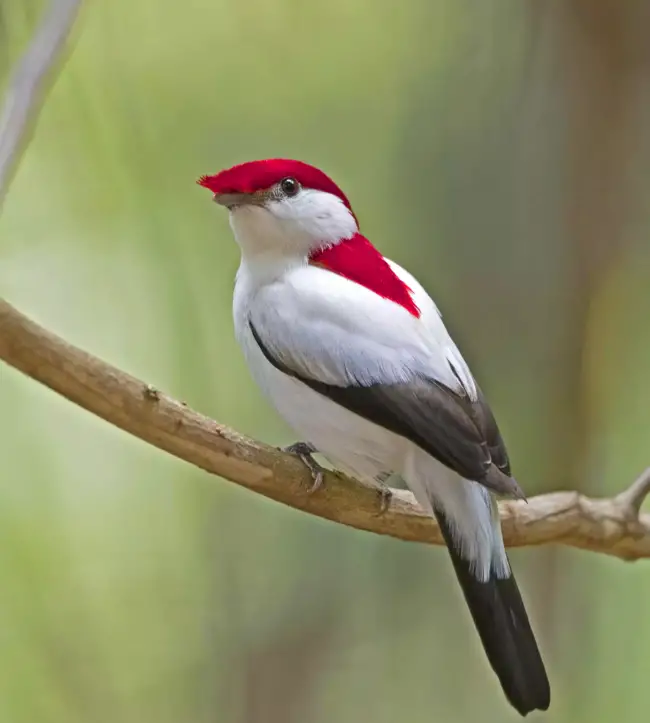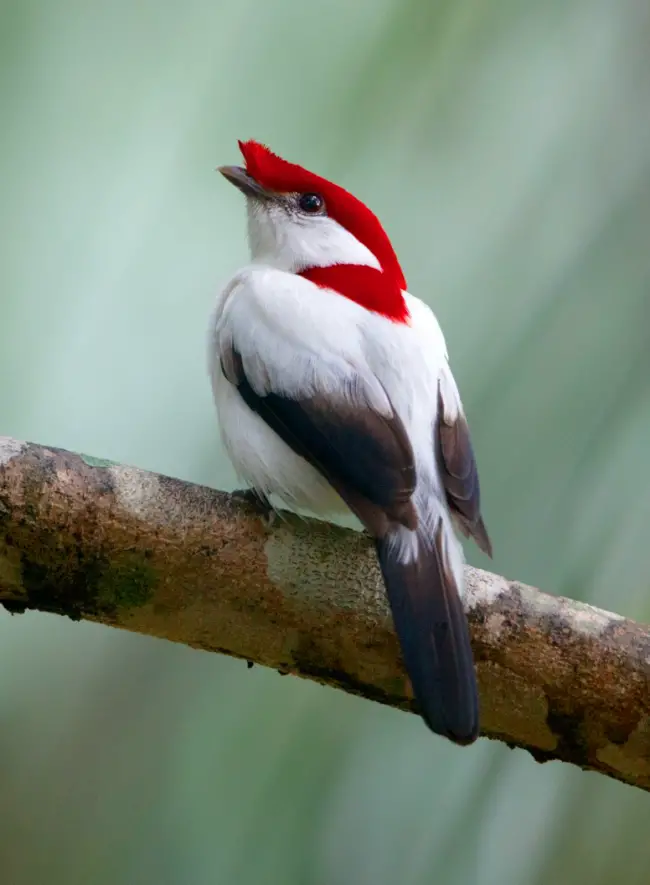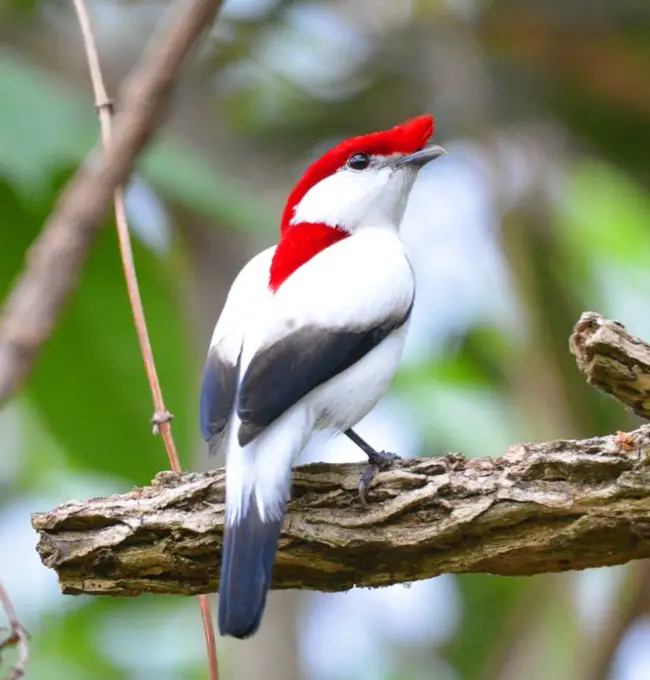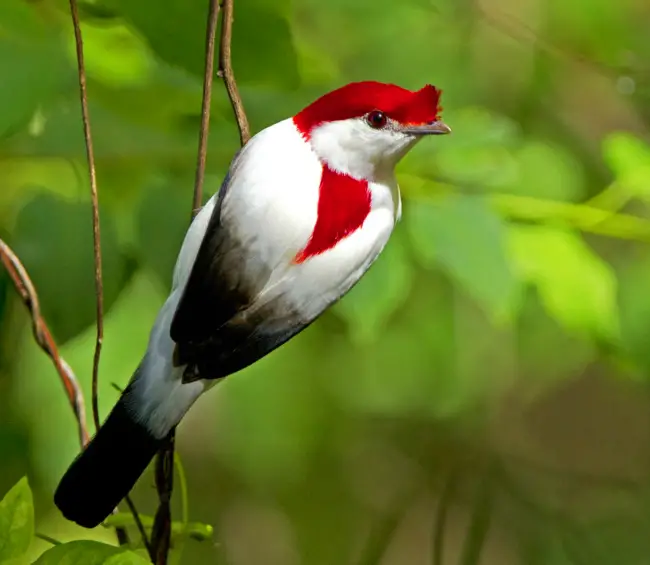The Araripe Manakin, also known as Antilophia bokermanni in scientific circles, is a small and unique bird species native to Brazil. This recently discovered bird has captured the hearts of both bird experts and enthusiasts alike. In this article, we will explore the world of the Araripe Manakin, delving into its distinctive characteristics, habitat, conservation status, and the efforts being made to protect this endangered species. Known for its striking appearance, the Araripe Manakin boasts vibrant plumage that sets it apart. The males sport a dazzling combination of fiery red and black feathers, complemented by white wing patches and a bright blue cap on their heads. In contrast, females have a more subtle yet captivating olive green coloring. Their behavior is equally fascinating, with males engaging in elaborate courtship displays to attract females. These displays include acrobatic jumps and wing-snapping noises, showcasing the unique and captivating nature of the Araripe Manakin.

The Araripe Manakin is considered an endemic species, found exclusively in the small region of the Araripe Plateau in northeastern Brazil. These birds thrive in the unique habitat of “brejos,” which are lush wooded areas with streams and springs. The temperate climate and limestone formations in the area provide the perfect conditions for the Araripe Manakin to call it their home.

The critical situation faced by the Araripe Manakin is due to various threats it is currently facing. Loss of its habitat due to deforestation, expansion of agriculture, and urban development is the primary concern. Moreover, the invasion of exotic species and illegal capture for the pet trade have further impacted its population. This has led to the classification of the Araripe Manakin as “Critically Endangered” by the International Union for Conservation of Nature (IUCN), highlighting the pressing need for conservation initiatives.

Efforts to save the Araripe Manakin involve various conservation projects. These include the establishment of protected areas such as the Araripe-Apodi National Forest and Araripe-Araripina Environmental Protection Area to safeguard the bird’s habitat and biodiversity. Additionally, continuous research and monitoring are conducted to study the population, behavior, and ecological requirements of the Araripe Manakin. These efforts provide valuable insights for conservation planning and decision-making.

c) Education and awareness: It is essential to increase awareness about the importance of safeguarding this one-of-a-kind species within the local communities, policymakers, and the general public. By providing educational programs, birdwatching trips, and community engagement initiatives, we can instill a sense of responsibility for the protection of the Araripe Manakin.


